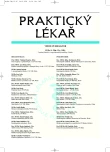Human and avian influenza
Co je lidská a co je ptačí chřipka
Lidská chřipka je vysoce nakažlivé onemocnění způsobené chřipkovými viry A pouze s kombinacemi povrchových antigenů hemaglutininů a neuraminidáz H1N1, H2N2 a H3N2. Vyskytuje se epidemicky v zimních měsících. Hlavními příznaky je náhlý začátek s vysokou horečkou, bolesti hlavy, značná únava, dráždivý kašel, bolesti v krku, svalů i kostí. Pokud je průběh u jinak zdravých osob bez komplikací, léčí se pouze symptomaticky. Viry ptačí chřipky mají různé kombinace 16 hemaglutininů a 9 neuraminidáz. Způsobují onemocnění jen těch ptáků i dalších živočichů, kteří mají v dýchacích cestách epiteliální buňky s receptory, umožňujícími uchycení těchto virů a jejich replikaci. Člověk takové buňky nemá. Výjimečně onemocní při úzkém styku s nemocnými ptáky a je-li velká infekční dávka. Lékem volby při chřipce lidské i ptačí u rizikových pacientů jsou inhibitory neuraminidáz. Podávají se 5 dnů, ale léčba se musí zahájit v prvních dvou dnech onemocnění, kdy je nejvyšší replikace viru. Později zahájená terapie těmito antivirotiky již průběh chřipky neovlivní.
Klíčová slova:
lidská chřipka, ptačí chřipka, hemaglutinin, neuraminidáza, inhibitory neuraminidáz.
Authors:
J. Havlík
Authors‘ workplace:
Emeritní profesor I. infekční kliniky 2. LF UK, Praha
Published in:
Prakt. Lék. 2006; 86(10): 559-563
Category:
Reviews
Overview
Influenza is a contagious illness caused by influenza viruses. Influenza Aviruses are designated on the basis of the antigenic relationships of the haemagglutinin (HA) and neuraminidase (NA) proteins. Of these only H1, 2 or 3 and N1 or 2 are known to infect humans. Outbreaks of influenza usually occur in colder months. The main symptoms are an abrupt onset with high fever, headache, extreme tiredness, dry cough, sore throat, muscle and bone aches. Only symptomatic treatment is indicated in otherwise healthy persons without complications. Avian influenza viruses have various combinations of 16 haemagglutinins and 9 neuraminidases. They cause illness only in birds and other animals that have epithelial cells in their airways that bear receptors enabling adhesion and replication of avian flu viruses. There are no such cells in humans. Human infection is exceptional, resulting from direct contact with infected birds with a high infectious dose. Antiviral drugs - neuraminidase inhibitors - may be recommended for the treatment of both human and avian influenza. Antiviral treatment lasts for 5 days and must be started within 2 days of illness when the viral replication culminates. A later initiation of antiviral treatment has no effect on the course of influenza.
Key words:
human influenza, avian influenza, haemagglutinin, neuraminidase, neuraminidase inhibitors
Labels
General practitioner for children and adolescents General practitioner for adultsArticle was published in
General Practitioner

2006 Issue 10
- Hope Awakens with Early Diagnosis of Parkinson's Disease Based on Skin Odor
- Memantine Eases Daily Life for Patients and Caregivers
- Memantine in Dementia Therapy – Current Findings and Possible Future Applications
- Metamizole vs. Tramadol in Postoperative Analgesia
- What Effect Can Be Expected from Limosilactobacillus reuteri in Mucositis and Peri-Implantitis?
Most read in this issue
- Early repolarization: how could be misinterpreted as an acute coronary ischemia
- Penis size and female sexual satisfaction
- Gastroesophageal reflux disease – questions and answers, myths and facts
- Twenty four hour effectiveness of metoprolol tartrate in patients with newly diagnosed hypertension.
